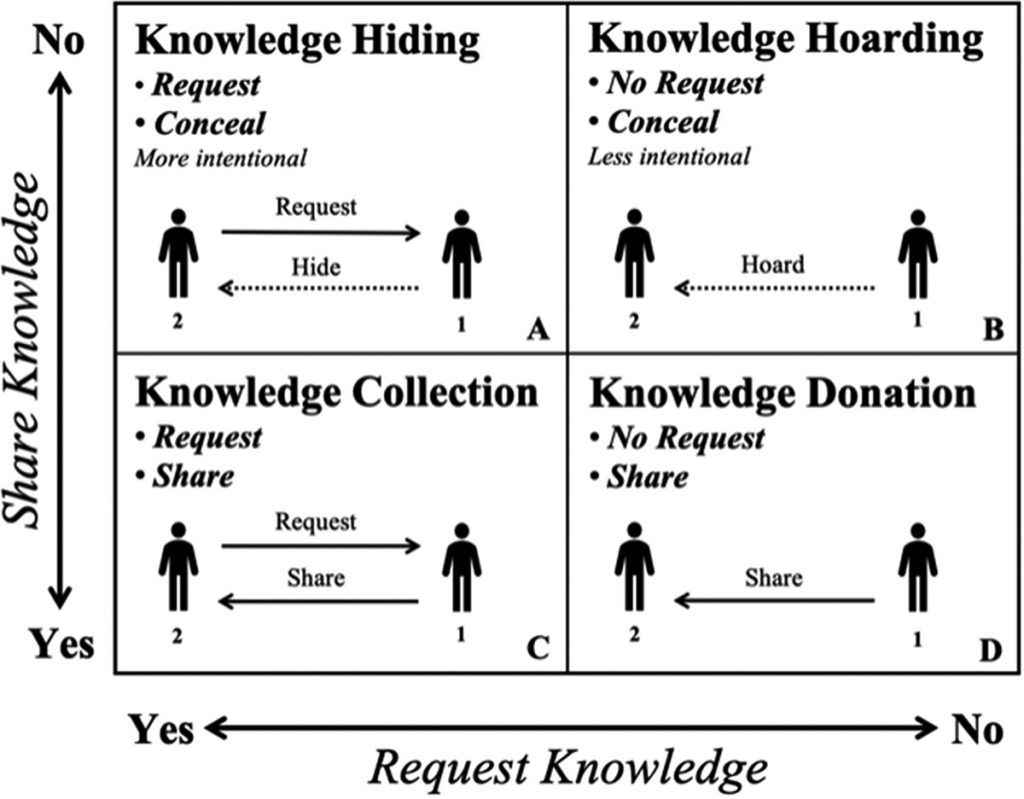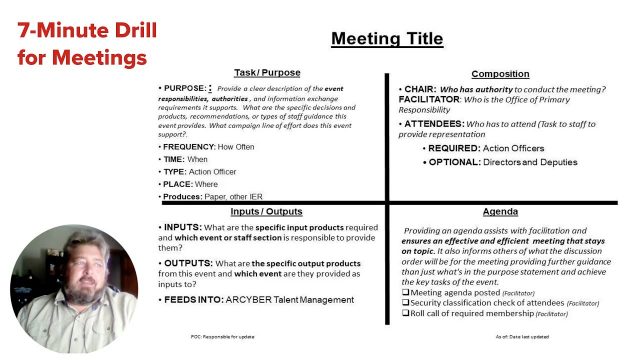
The relationship between knowledge sharing, hiding, and hoarding
This article is part of a series on knowledge withholding, hiding, and hoarding.
In previous RealKM Magazine articles, we’ve presented summaries of reviews of the research in regard to knowledge hiding1 and knowledge hoarding2. Both have been identified as knowledge risks3.
A recent paper4 builds on this understanding by reviewing and analysing the research in regard to the characteristics of knowledge hiding and knowledge hoarding.
From their analysis, the paper authors establish a relationship between these two undesired behaviours and knowledge sharing’s underlying processes, which they describe as the concepts of ‘knowledge collection’ and ‘knowledge donation’. This relationship is shown in the proposed framework in Figure 1.

In this proposed framework, individual number 1 owns some important or relevant knowledge that could benefit individual number 2. This knowledge could be requested or not, considering that the individual who needs the knowledge does not necessarily know who could supply it.
Quadrant A shows that individual 2 requests some knowledge from individual 1 and does not receive the requested knowledge because, instead of sharing, individual 1 intentionally hides what they know, preventing knowledge collection.
Quadrant B, by contrast, shows that individual 2 does not request any knowledge, although individual 1 possesses some knowledge that could benefit them. Instead of voluntarily sharing what they know, individual 1 prefers to hoard the knowledge, and this behaviour is represented by the dotted arrow in Figure 2. As a result, individual 1 prevents knowledge donation.
Quadrants C and D present the phenomena of knowledge collection and knowledge donation. In quadrant C, individual 2 asks for knowledge and individual 1 shares what was requested, making the knowledge collection process effective. Finally, in quadrant D, individual 1, acknowledging that his or her knowledge could benefit individual 2, voluntarily shares it, even though individual 2 had not requested the knowledge that was shared. In this case, individual 1’s initiative makes knowledge donation effective.
The paper authors advise that personal and contextual factors are likely to significantly influence engagement in knowledge collection, knowledge donation, knowledge hiding, or knowledge hoarding behaviours, and therefore need to be investigated, particularly in social interactions within and among knowledge-intensive teams.
They suggest that this future research could provide the academic community with a more profound understanding of the causes and consequences related to knowledge flow in social interactions within and among knowledge-intensive teams, thus ensuring access to the means to better manage the factors that benefit or harm individual, group, and organisational performance.
Header image source: Robin Higgins on Pixabay, Public Domain.
References:
- Ruparel, N., & Choubisa, R. (2020). Knowledge hiding in organizations: A retrospective narrative review and the way forward. Dynamic Relationships Management Journal, 9(1), 5‐22. ↩
- Bilginoğlu, E. (2019). Knowledge hoarding: A literature review. Management Science Letters, 9(1), 61-72. ↩
- Durst, S., & Zieba, M. (2018). Mapping knowledge risks: towards a better understanding of knowledge management. Knowledge Management Research & Practice, 1-13. ↩
- Silva de Garcia, P., Oliveira, M., & Brohman, K. (2020). Knowledge sharing, hiding and hoarding: how are they related? Knowledge Management Research & Practice, DOI: 10.1080/14778238.2020.1774434. ↩
Also published on Medium.


![Collaborating on Research by National Eye Institute [Flickr image]](https://realkm.com/wp-content/uploads/2018/07/9955278615_c5356cdffd_z.jpg)



